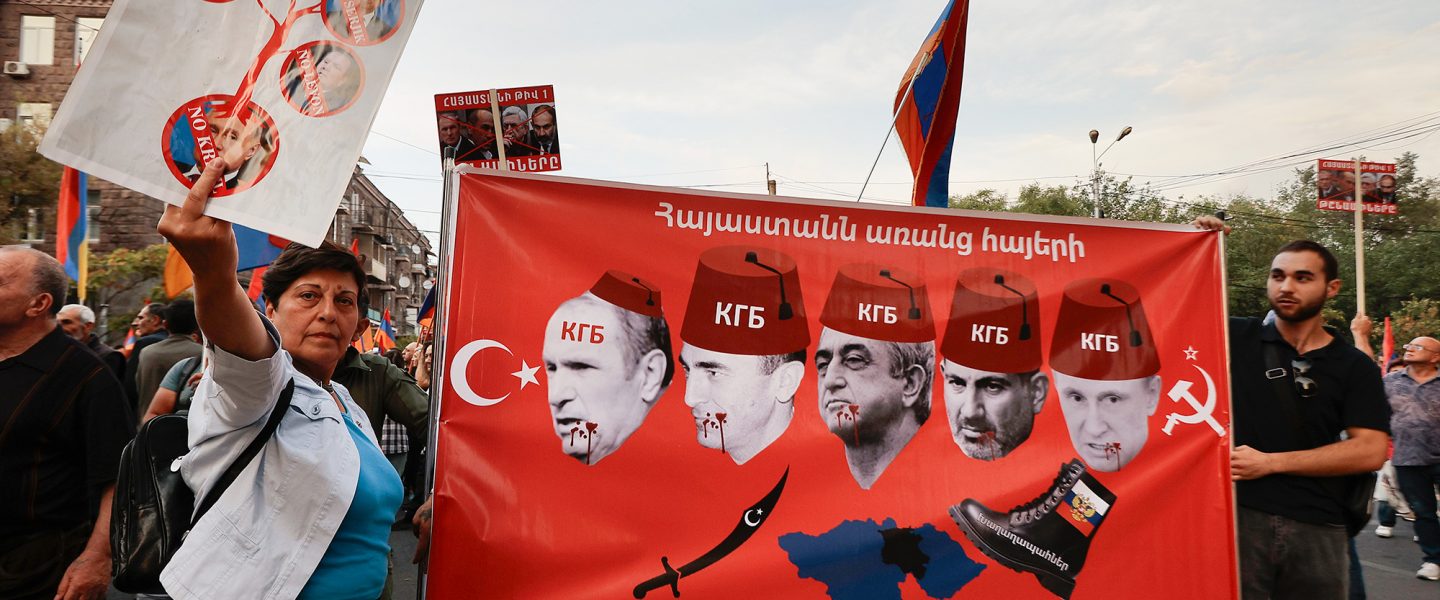After two wars and 30 years of conflict, Nagorno-Karabakh, an Armenian enclave on the territory of Azerbaijan, is no more.
|
Listen To This Story
|
The brutal attack that Azerbaijan launched against embattled Armenians in the Nagorno-Karabakh enclave began with an abrupt roar on September 19 and lasted for exactly one day before the Armenians were forced to surrender.
The sudden collapse of all resistance put a definitive end to the self-styled Republic of Artsakh, which had attempted to maintain an independent government on a piece of territory that most of the rest of the world, including the UN, considered part of Azerbaijan. Russian troops, who had played a peace-keeping role following a Moscow-negotiated ceasefire between Armenia and Azerbaijan in 2020, did little to help.
For the 120,000 citizens of the former break-away republic, the sudden onslaught, following months in which the enclave was sporadically cut off from the outside world, was the final traumatic event. Azerbaijan pledged that it would not harm civilians who remained. After 30 years of bitter confrontations, no one believed them.
It’s hard to know how many civilians were killed in the artillery barrages and bombing. Survivors were given an hour to pack their belongings and flee to the enclave’s capital, Stepanakert. There they were forced to wait until Azerbaijani soldiers allowed them to pass through the Lachin corridor, the only road connecting Nagorno-Karabakh to Armenia.
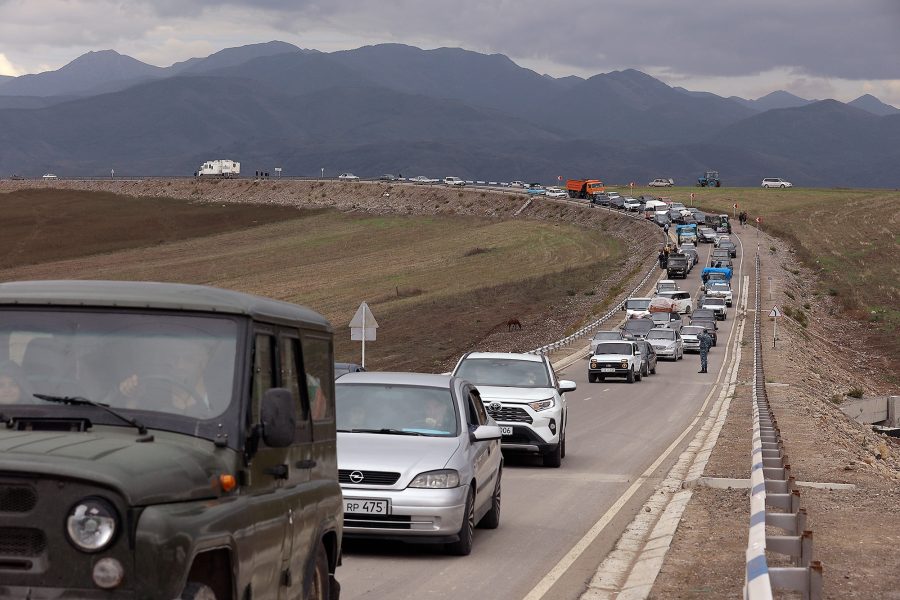
Some traumatized civilians waited for days at the Stepanakert airport, where they attempted to sleep on the frigid cement of the airport runway. Others tried to hide in bomb shelters hoping to wait out the attacks. The Artsakh Information Headquarters posted photographs on its Facebook page of damage from the bombing in Stepanakert. It was not until last Sunday, five days after the end of the war, that they were finally allowed to leave.
I was on the ground covering Nagorno-Karabakh for nine days. I watched neighboring Armenia turn from a country engaged in protesting the perceived inaction of Prime Minister Nikol Pashinyan into one that was primarily focused on providing aid to the Armenian refugees. Counting from September 24, when the first Armenians were allowed to leave, more than 100,000 refugees escaped using the two-lane Lachin corridor.
A United Nations inspection team — the first in 30 years — arrived in Stepanakert by the end of last week. By then there was practically no one left, except a few old people who were too tired and sick to leave. A video of Stepanakert’s main square, which ran on Al Jazeera, showed desolation: empty chairs and tables, no people in sight, only a few abandoned dogs scrounging for scraps of food.
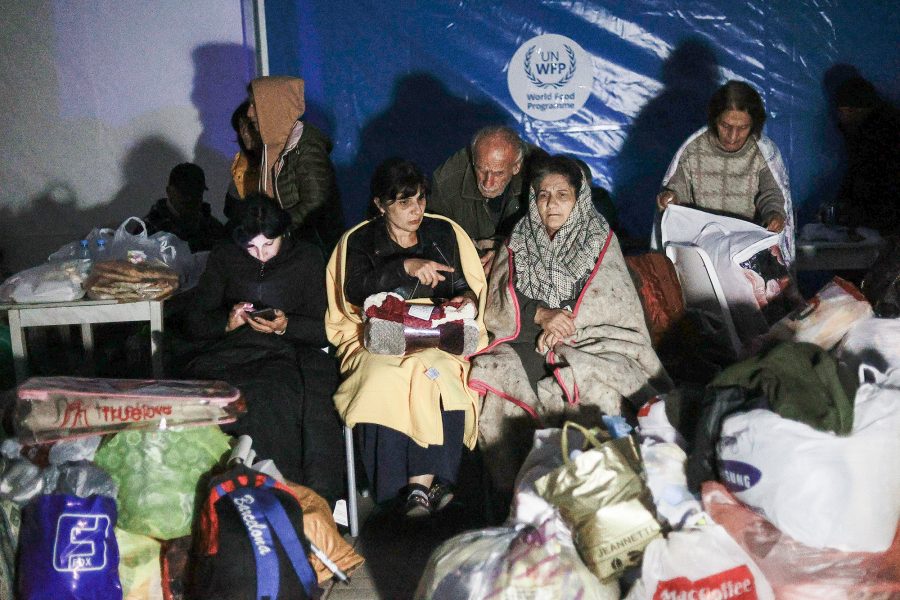
Before the Refugee Crisis
I arrived in the Armenian capital, Yerevan, on Friday, September 22, to find large protests on the city’s streets. Baku had already declared it had won the war.
The historical ties between Nagorno-Karabakh and Armenia are extremely complex. Each country claims ownership of the region, and the debates have led to two wars since 1988. In between, there have been countless incidents of violence. Last December, Azerbaijan launched a strategic blockade that prevented access to critically needed supplies including food and medication. Before long, the markets were empty and hunger gripped the population.
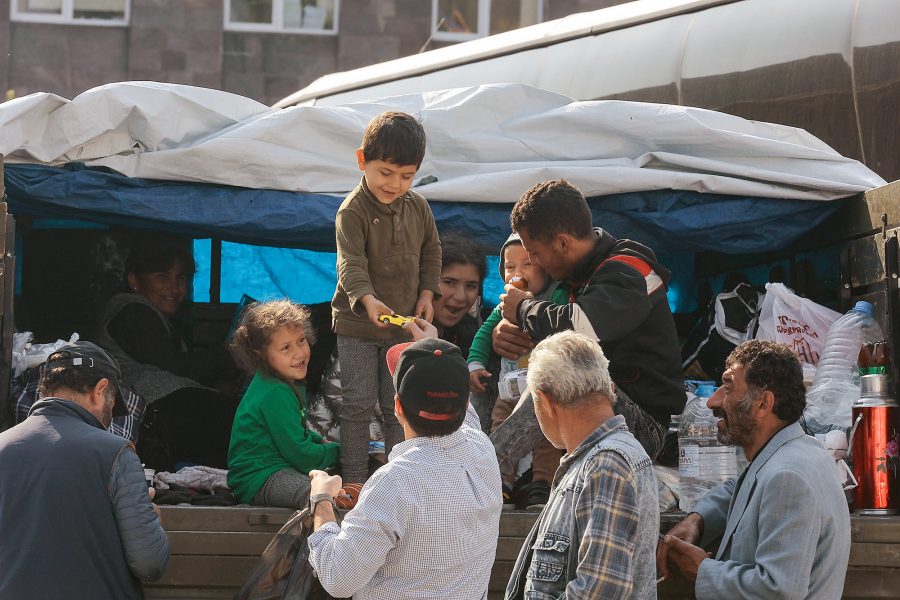
At the protest in Yerevan, a 20-year-old college student named Diana told me that she was from Nagorno-Karabakh and that her family was still trapped there.
“They don’t have any lights,” she said. “They don’t have anything to eat. They are struggling, and they are really scared. The situation is very hard. There is a blockade. There is no hope.”
Diana and other student activists want the Armenian government and the rest of the world to pay attention to what is occurring in Nagorno-Karabakh. “The aggression will never stop until we stop it ourselves, and also we’re trying to make this visible for the world because it feels like nobody really cares,” she said.
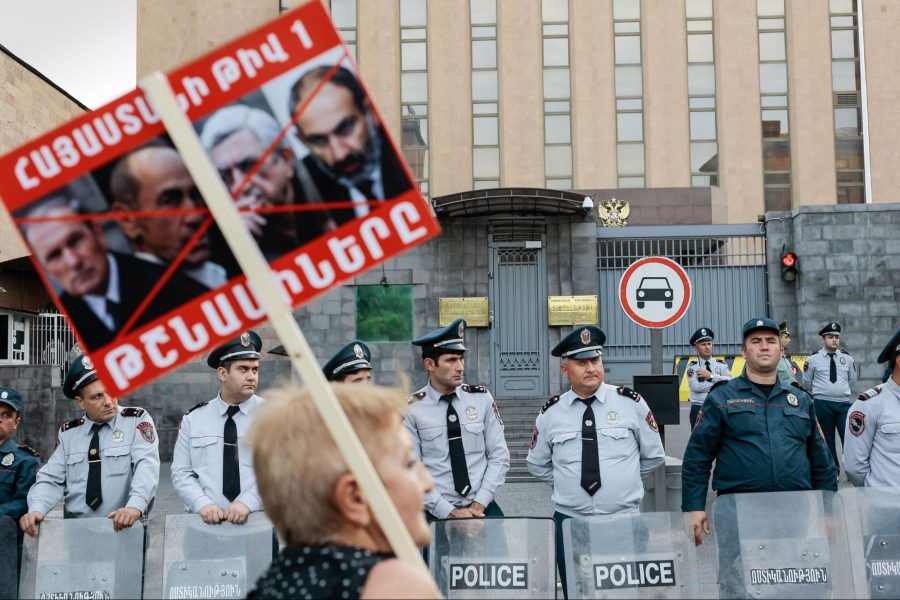
The First Refugees Arrive
Two days later, on Sunday, Telegram reported that the first refugees had been allowed to pass through the Lachin corridor into Armenia. When I arrived at the border a few hours later to see the exodus, there appeared to be more press than refugees. Armenian government officials were trying to keep journalists from any direct contact with those fleeing the country. The humanitarian aid tent set up in Kornidzor, their point of arrival, was completely closed off. There was no way in. Government press cards and letters from editors had no effect.
Instead, the press was directed to the Goris Hotel, one of the few locations where contact with refugees was authorized as they tried to figure out their next steps. The large Soviet-style hotel, with its vast amounts of public space, offered warm meals and a bit of respite after their harrowing journey. On the first day, they were mostly families, often with young children, and elderly people. One man in his 70s, who told me his name was “Artem,” said simply, “It’s all gone.” Then he started to cry.
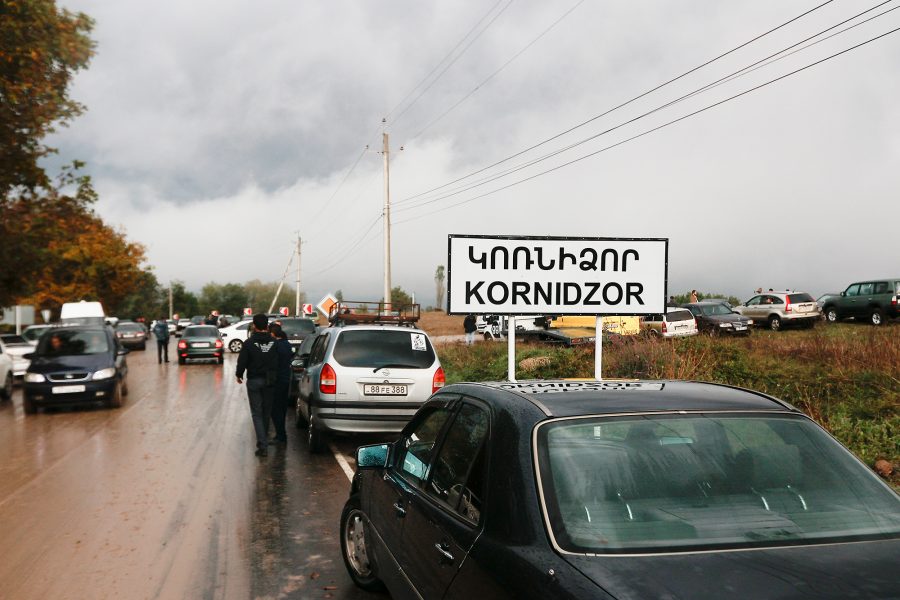
By then, thousands of refugees were passing into Kornidzor. Some parked, and most likely abandoned their cars forever, only a few yards from the Armenian frontier. One man told me that he was not interested in speaking with journalists; nobody had cared when Azerbaijan invaded Nagorno-Karabakh in 2020, he said, and the world had just let it happen.
His feelings were echoed by most of the people I spoke with in Goris. Armenians had begged the world to do something about the constant hostile acts that the Azerbaijani government had engaged in against the enclave over the last three years. The humanitarian blockade, which stopped food and other critically needed supplies coming into the region, had delivered the final blow.
Stella, a 71-year-old woman, told me, “After the blockade in the last three months, nothing was left in any of the stores. There was no food, no diapers, no washing powder, nothing.”
The invasion meant that life in Nagorno-Karabakh was no longer sustainable. “There was no electricity,” Stella said. “The only light we had was from candles.”
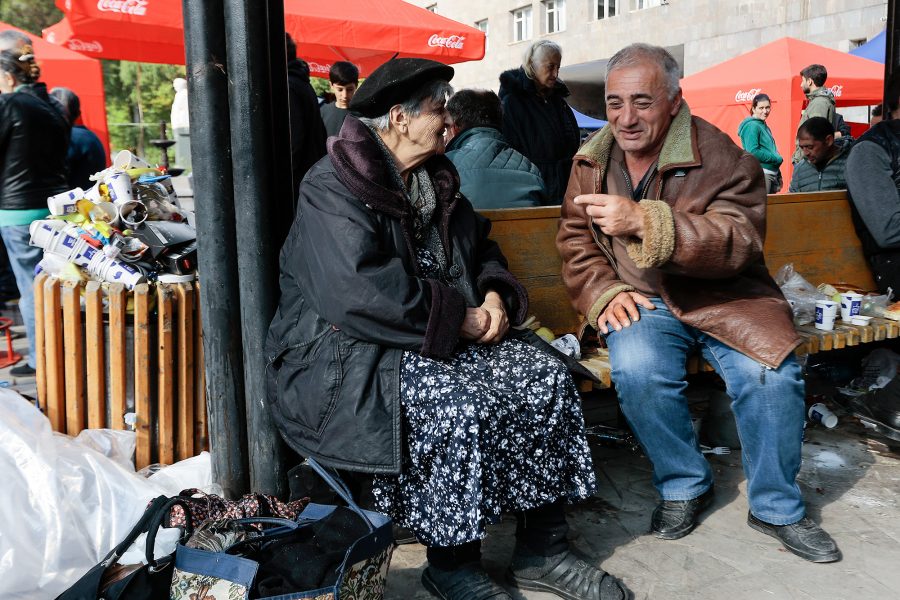
She continued:
On the last day, we just sat there. They bombed the houses. They (Azeris) said that nothing was going to happen to the city. We could stay in our homes and everything would be fine. In the end, we had to leave. No Armenians were left. We had to leave.
Now, Stella and her daughter’s family are planning to move to Armenia’s capital, Yerevan, 148 miles to the west of Goris, where she has a cousin. Staying with her cousin may not last long. A major consideration is Stella’s granddaughter, who is only a month old. She explained:
This is temporary. We need to live. We need to rent a flat and live. I lived my whole life in Artsakh. I lost everything. Coming here is pain. Everyone knew what was happening in Nagorno-Karabakh. But no one did anything.
We were speaking outside a humanitarian aid center that had been set up in an old theater in Goris where thousands of displaced people sought refuge.
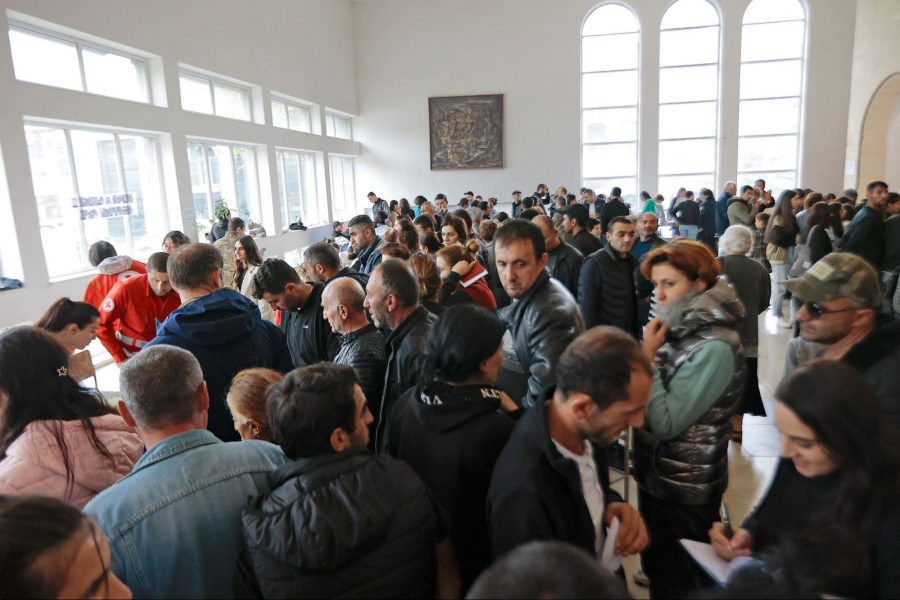
Goris in Crisis
An explosion at a fuel depot in Stepanakert on September 25, the day after refugees had been allowed to leave Nagorno-Karabakh, killed at least 170 people. Hundreds more were wounded. Many of those who survived the explosion were left stranded without fuel for their cars, further hindering their escape. In the following days, they arrived at the frontier in vans, cars — some of them towed behind other cars and trucks — and in the backs of construction vehicles.
One woman I met in Goris told me that she and her son, who is physically impaired, had managed to get out, but another son had been near the oil depot at the time of the explosion. She had not heard from him since. The mother and son had been living at a nursing home, and everyone at the care facility was moved a few days after the start of the evacuation. An older man, who came with them, said the facility’s residents needed longer to prepare for their journey, and required more supplies and services than the thousands of other refugees who came to Goris.
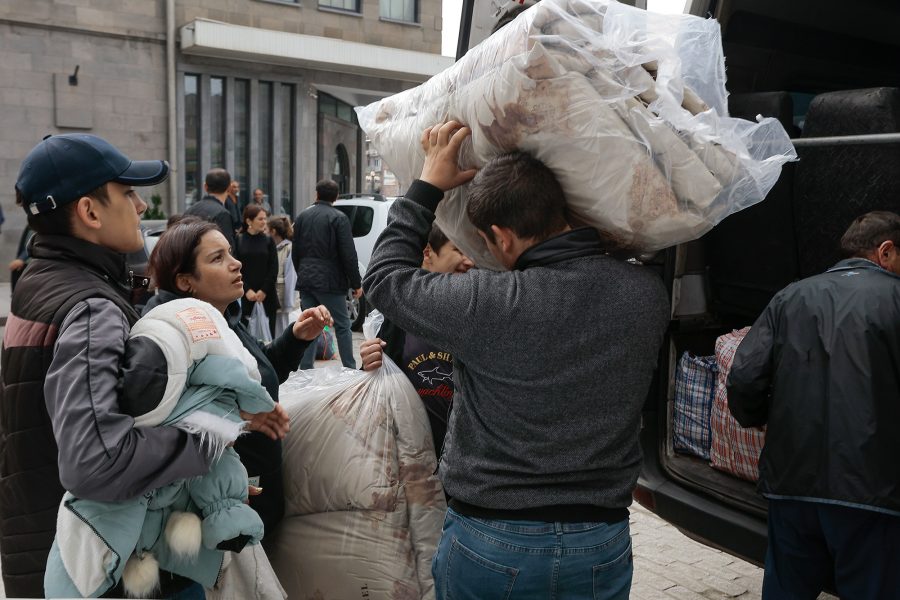
When I returned to Goris, it was impossible to recognize the town I had visited only five days earlier. The streets were lined with refugees and piles of trash. People were sleeping on the streets as they figured out what to do next. Journalists were allowed inside the theater for only a few minutes before they were chased out by police and the military.
Inside the theater was a scene of chaos. The building looked more like a construction site than an aid station. There were only a few chairs and tables. A number of people were sitting on the floor next to the walls. In a back room, women sorted through clothes that had been dumped in boxes and piles on the ground to provide emergency clothing for those in the main room. Volunteers frantically attempted to provide medical aid to those who needed it and to collect information from the lines of people out front.
The volunteers had worked with little sleep for more than a week. Armine — a volunteer with Viva Foundation, a group of Armenian medical professionals — told me that an unsettling number of refugees had the flu. “Some of them have fever, “ she said. “It’s cold. There are a lot of sick children.” Armine said that a handful of pediatricians were “doing their best to take care of them.”
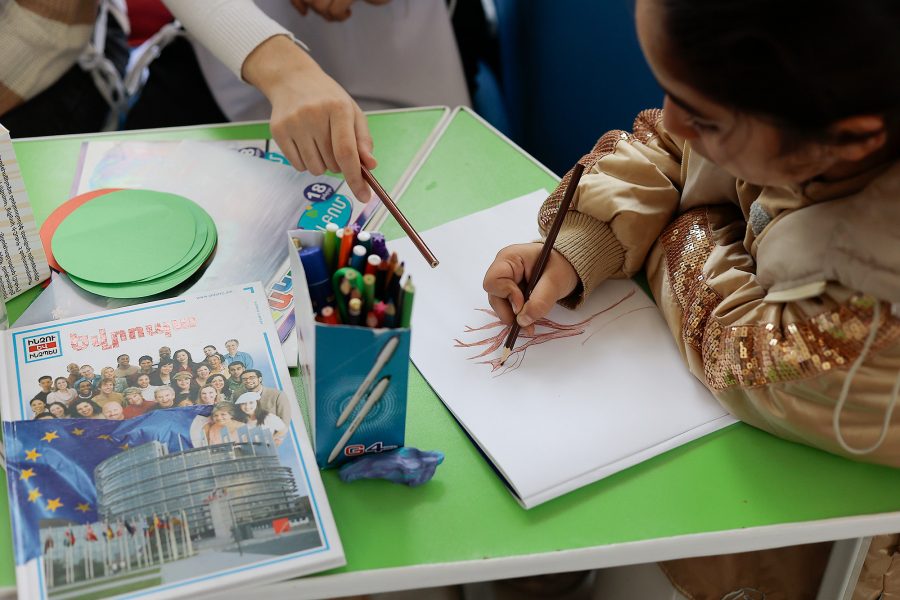
She said that she has mostly been on autopilot, focusing primarily on the small tasks that need to be done immediately. No one has had time to think about the larger picture of the refugee crisis that is rapidly unfolding around them.
Shortly after speaking with Armine, we were ushered out of the building and told not to stick around outside. We nevertheless managed to speak to a number of refugees sitting in the park next to the center.
A middle-aged woman named Rimma was sitting with her adult daughter, Gora, on one of the park’s cement benches. When the invasion began, Rimma explained, she and her daughter were at home in Martakert. They were too afraid to try escaping, so they spent three days hiding in the basement of their house. “We heard bombing,” she said, “but it was not nearby. There were dead and wounded.”
By Friday, both mother and daughter decided it was time to leave home and try to get to Armenia. “We were afraid to stay,” Gora explained. “It was sad. We didn’t want to leave, but we had no other choice. If we didn’t leave, we were afraid that they would kill us.”
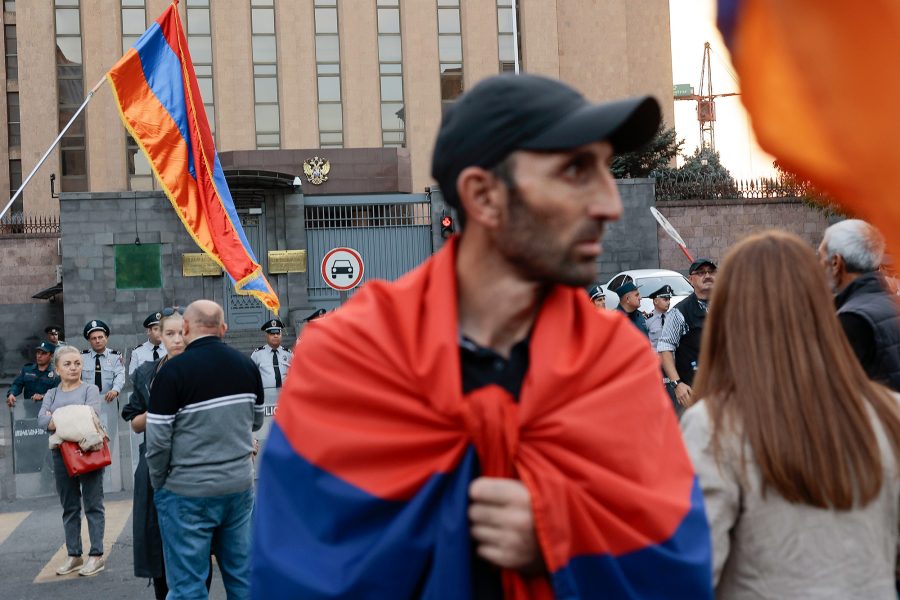
Both Rimma and Gora plan to stay in Yerevan, but they have no idea if even that is possible. Yerevan is expensive, and they don’t know at this point whether they will be able to afford it.
“The most difficult thing is to realize that now we have no homeland,” Rimma said. “Leaving everything behind was sad, but we had to save our lives.”
